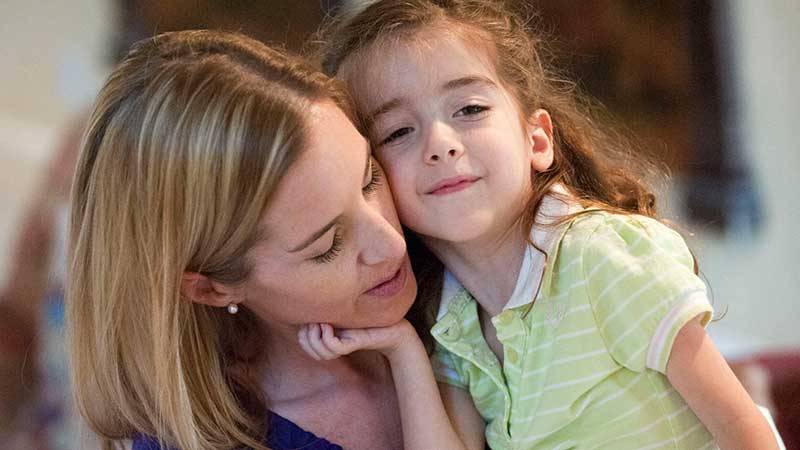From possible to pivotal
The use of mice in biomedical research has contributed dramatically to medical progress. In fact, medicine today is built on a foundation of mice as models of human disease. Mice are biologically similar to us, get most of the same diseases with the same genetic susceptibilities, and can be genetically manipulated to mimic most human diseases and conditions.
For more than a century, scientists have used the mouse as a genetic model of the human being to understand our fundamental biology and to identify and test better treatments and cures for the most devastating diseases. Mice were used to demonstrate the effectiveness of penicillin in fighting bacterial infection—progress that has saved the lives and limbs of hundreds of thousands of people. Research with mice led to treatments for leukemia that have extended the lives of countless children. Forty years of research with mice led to the introduction of the Salk vaccine that has protected millions of us from polio. And, meningitis vaccines developed through mouse research have prevented numerous others from life threatening disease. In the past 20 years alone, the Center for Disease Control estimates that vaccines have saved the lives of three quarters of a million children and avoided 21 million hospitalizations.
Similarly, work in mice to understand the body’s immune system enabled organ transplants. In 2015, there were more than 30,000 transplants in the United States alone and tens of thousands more globally; nearly all extended and improved quality of human life. Therapies for breast cancer which will afflict one in eight women were also developed using mouse models: tamoxifen, Herceptin, and aromatase inhibitors all arose from mouse studies of the most common cancer to affect the female half of our population.
Mouse-based research has contributed to better therapies and care for animals as well.
But this important and lifesaving work is not done. Stem cell research in mice is ongoing to tackle heart disease, stroke, Alzheimer’s, spinal cord repair and numerous other life threatening or debilitating conditions. Gene therapy discovery to treat inherited childhood diseases such as cystic fibrosis, muscular dystrophy and sickle cell depends on mouse models. Vaccine research in mice may ultimately prevent Alzheimer’s, malaria, and HIV/AIDS. And the Cancer Moonshot depends on in-depth work with mice. All of this research would be slowed, if not stopped altogether, without the mouse models that underpin it. Mice are essential in medical research because most diseases cannot be modeled in a test tube and require experimentation in a whole organism.
The Jackson Laboratory pioneered the use of mice in disease research, and our mice and research programs have contributed to important medical breakthroughs ever since. Organ transplants, glaucoma prevention and treatment, obesity management, stem cell research, a spinal muscular atrophy cure, and leukemia treatments were all advanced at The Jackson Laboratory.
We are extremely proud of our research that is dedicated to curing and preventing human disease and of the mouse models and services we provide to over 20,000 laboratories around the world. We are equally proud of the compassionate care we give to the mice in our own research studies as well as to the millions more that we raise to support the important research work of the global biomedical community.
At The Jackson Laboratory, we give our mice the utmost respect and provide them ethical and humane care and treatment. The quality of the care for our mice and our facilities set the global bar for animal health. Our mice are raised under clean room conditions that are required for manufacturing the most sensitive pharmaceutical products —a standard higher than most hospital operating rooms. Each mouse’s welfare is checked at least once per day to ensure it is healthy, has ample food and water, and that its bedding is clean and dry. Trained animal welfare technicians give the utmost attention to the mice they care for every day. Our technicians must take and pass a minimum of two demanding courses in animal care and participate in a six-month internship before handling mice without direct supervision.
Our institutional animal care and use committee, which includes outside community members, overlooks our entire program, reviews and approves every protocol of research and care, and conducts semi-annual inspections to ensure they are being followed. The Association for Assessment and Accreditation of Laboratory Animal Care International (AAALAC), an independent, nonprofit organization that promotes the humane treatment of animals in science through voluntary accreditation and assessment programs, sends a team of people to review our entire program on a regular basis and consistently comments on how rigorous and progressive it is. We transparently self-report welfare concerns to the Office of Laboratory Animal Welfare, the federal regulatory body that oversees the care of laboratory mice by those who receive federal funding. And, we institute programs and practices to continuously improve the quality of our facilities and care.
There are those who believe that the use of mice in biomedical research is unnecessary. We strongly disagree. The solution to many diseases continues to hinge on precise mouse models of the human condition. Our mice benefit humankind. As their stewards, we provide them with the best care possible so that they can empower the global biomedical community in our shared quest to conquer human disease.
 JAX Professor Robert Burgess and collaborators are using mouse models to develop personalized gene therapy for Caroline, a child suffering from a debilitating neuromuscular disease.
JAX Professor Robert Burgess and collaborators are using mouse models to develop personalized gene therapy for Caroline, a child suffering from a debilitating neuromuscular disease.